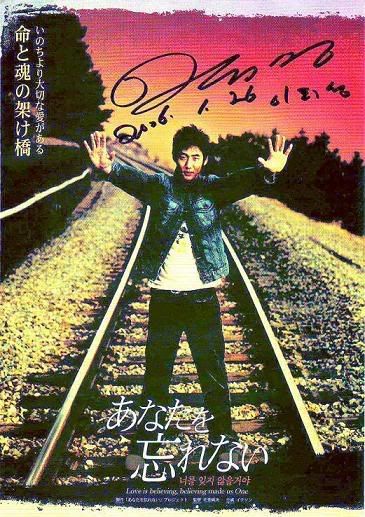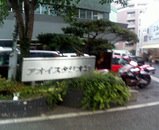Recording Music and Finishing Up

We finally finished all the sound processing. A sense of my energy being drained out had overcome me, and I needed a rehabilitation of sorts before I was able to update my blog.
This is a photo of our recording session at a music studio in Aoyama.
Actually, this was taken only four days after our meeting. I can’t help being impressed with the staffs for being able to complete the music at this stage. When the recording started, the music we heard was exactly what we had hoped for. The producers who were present all cried out in excitement. The serene requiem performed by a small ensemble of strings and piano expanded to the main theme which possessed a gentleness containing brightness and elevation. I couldn’t hold back the tears welling up inside me.
We continuously encountered things that seemed like a miracle up to the day the film was completed.
On this day, four composers participated in the recording. Because we were so short of time, these people had composed music for us by dividing the task by themes. And it was an acquaintance of Producer M. that introduced one of the member to us.
And this was made possible from a remarkable reunion of 20 years. Moreover, it was H-san who had written the main theme of this film – he and I had worked together for the first time with “Lament of a Lamb”.
And he had just come back to Japan two days before, having studied in the U.S.
Composing music for film is an incredibly difficult task. Even when we try to convey our images to the composer in meetings, there is always a limit in what words can express. For example, people would all hold different images to the word “gentleness” in their minds.
For this reason, in the typical process, we would determine the type of instruments we would use by theme.
In my case I would try to communicate my images by providing explanations like,
“For the theme for the hero’s girl friend, I think a piano solo and an ensemble with strings is appropriate.”
Or, “I want you to use the harmonica this time.”
“I want a sound like panpipe for this.”
Sometimes I would mention a famous theme from a certain film, or demonstrate the tempo…
But even after all this, there are times when my image would not be understood. The rest would all depend on how much we can share the image that is imagined from script and the finished film. By using every metaphor, gestures etc. that I can come up with, I try to give my all in conveying my image to the composer. Perhaps the process is similar to the one in solidifying the image of each character with the actors. And all I can do after that is to believe in them.
In my idea of film music, the plot and the personality of the characters would determine the instruments and tone in a natural manner. In that respect, my image was conveyed successfully in the very end… I felt that in this project, was saved at the 11th hour.
This film deals with a wide variety of sound, which was something new for me. And quite a lot in number, too.
As the film has to do with Japan and Korea, it has pop music heard on the streets of both countries, while it also includes ethnic music called Sauinori (農楽), along with music of the “enka” variety.
There is also a good deal of songs performed on the street and in live houses – these music have an important role in the development of the story.
The finishing of the music took until morning of the final day. I was at lost in trying to convey the finishing process for a “cinematic” sound. I felt a dilemma towards my own lack of vocabulary in communicating my image.
But all of us had one goal. It was to make the very best.
In the process of achieving this goal, we had a passionate crew that worked through an unbelievable schedule for the finishing stage of the film.
And in the end, we were able to create a world of sound that exactly matched my image. We exchanged firm handshakes…. thank you so much. Now, we can proudly present this work to the world.
Then, we finished the work on the end-title roll.
Now, we will wait for the editing on the negatives, and then all there is to be done is to wait for the processing.
(originally posted in Japanese on Sept. 21, 2006)





